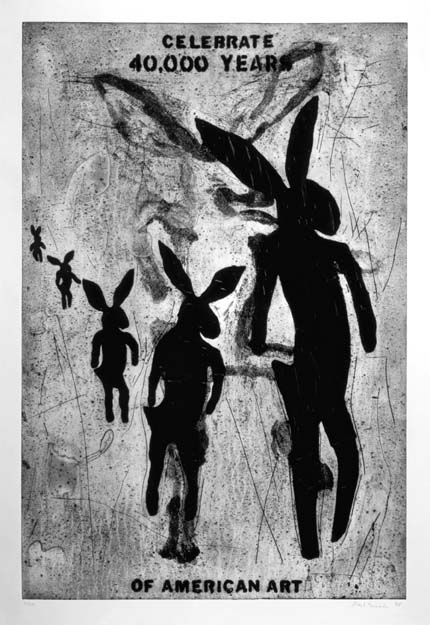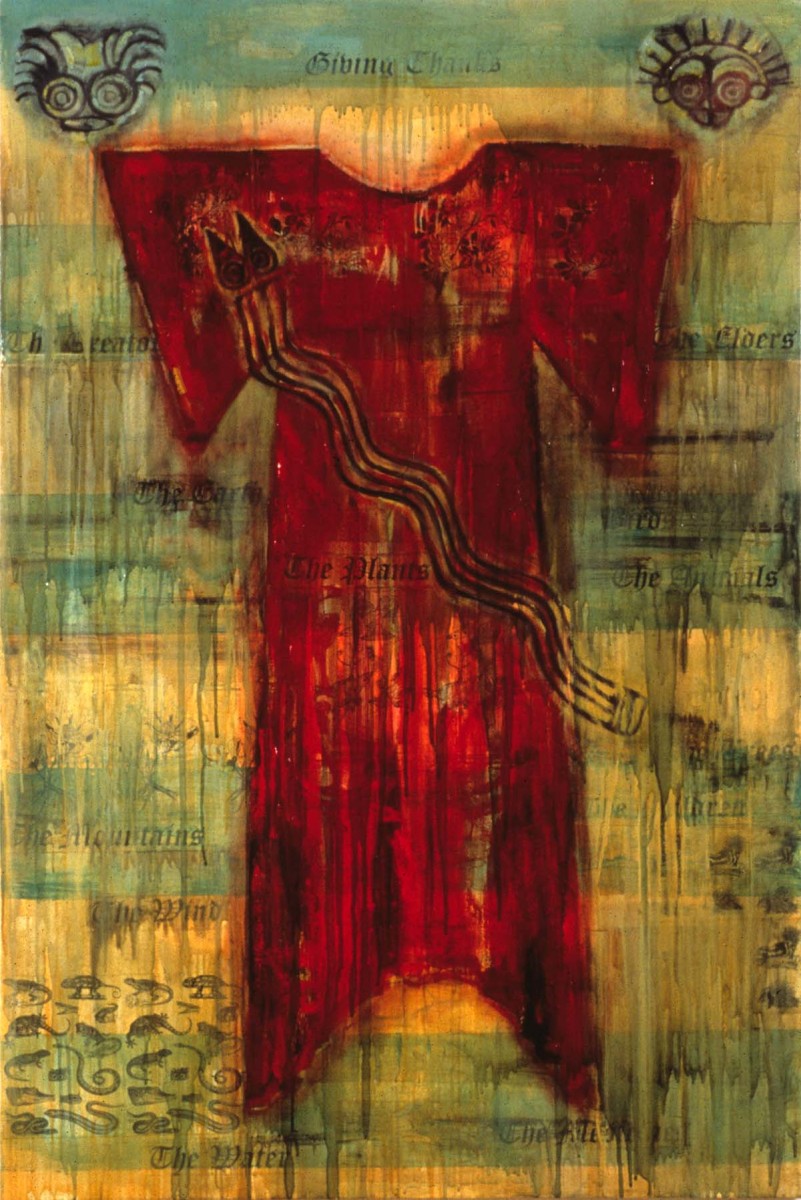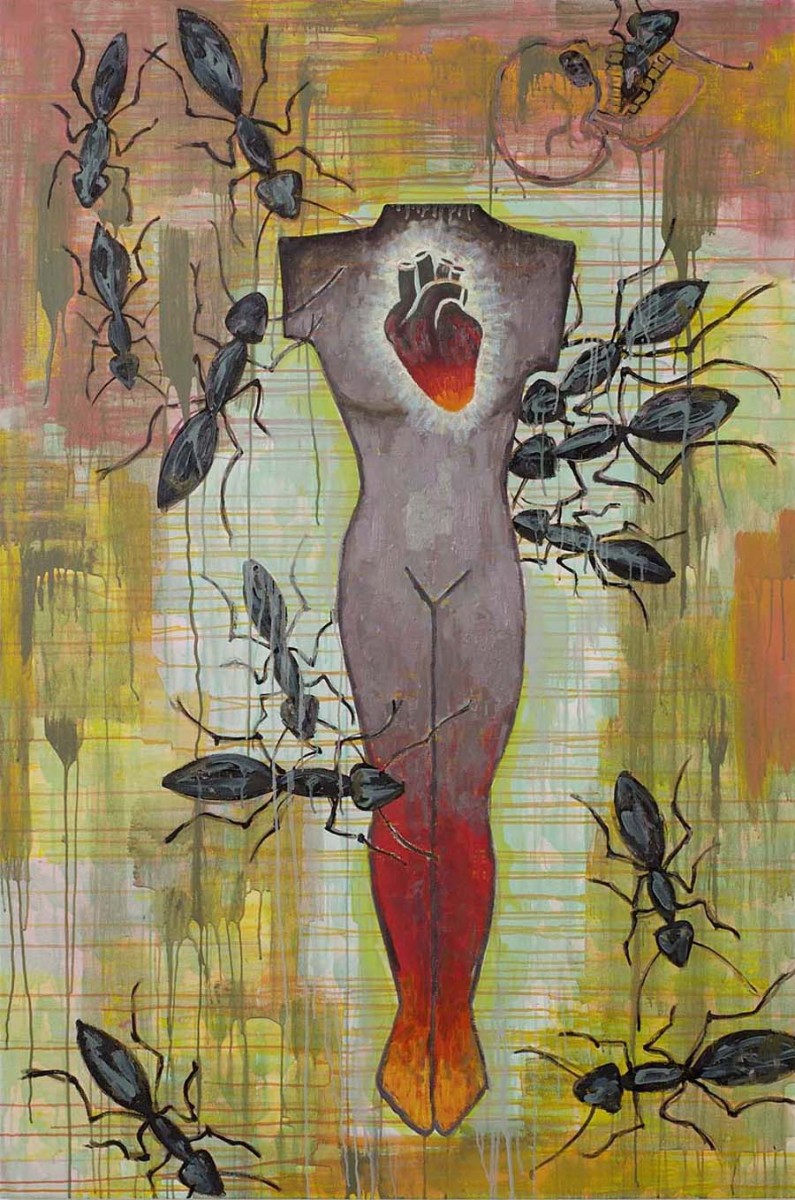Jaune Quick-to-See Smith
Corrales, NM
USA
Jaune Quick-to-See Smith was born at the Indian Mission on the Flathead Reservation in 1940. She is an enrolled Flathead Salish member of the Confederated Salish and Kootenai Tribes of the Flathead Indian Nation, Montana.
She received an Associate of Arts Degree at Olympic College in Bremerton Washington in 1960. She attended the University of Washington, received her BA in Art Education at Framingham State College in 1976 and a masters degree in art at the University of New Mexico in 1980.
Jaune Quick-to-See Smith is one of the most acclaimed American Indian artists today. She has been reviewed in all major art periodicals. Smith has had over 90 solo exhibits in the past 30 years and has done printmaking projects nationwide. Over that same time, she has organized and/or curated over 30 Native exhibitions, lectured at more than 185 universities, museums and conferences internationally, most recently at 5 universities in China. Smith has completed several collaborative public art works such as the floor design in the Great Hall of the new Denver Airport; an in-situ sculpture piece in Yerba Buena Park, San Francisco and a mile-long sidewalk history trail in West Seattle.
Smith has received awards such as the Academy of Arts and Letters Purchase Award, NY l987; the Joan Mitchell Foundation Painters Grant 1996; the Womens Caucus for the Arts Lifetime Achievement 1997; the College Art Association Women’s Award 2002 and three honorary doctorates: Minneapolis College of Art and Design 1992; Pennsylvania Academy of Fine Arts 1998; Massachusetts College of Art 2003; Governor’s Outstanding New Mexico Woman’s Award 2005; New Mexico Governor’s Award for Excellence in the Arts, the Allan Houser Award 2005.
She is in the collections of the Museum of Modern Art, Quito, Ecuador; the Museum of Mankind, Vienna, Austria; The Walker, Minneapolis, MN; Smithsonian American Art Museum, Washington DC; the Museum of Modern Art, the Brooklyn Museum, the Metropolitan and The Whitney Museum, NY.
Smith calls herself a cultural art worker. With her Native worldview, Smith’s work addresses today’s tribal politics, human rights and environmental issues with humor. Critic Gerrit Henry, (Art in America 2001) wrote: “For all the primal nature of her origins, Smith adeptly takes on contemporary American society in her paintings, drawings and prints, looking at things Native and national through bifocals of the old and the new, the sacred and the profane, the divine and the witty.”
Feminist Artist Statement
Jaune Quick-to-See Smith – Statement of a Cultural Arts Worker Artist
I have memory of making things with my hands from mud, leaves, sticks and rocks from very early in my life. I knew that I entered another world, one that took me out of the violence and fear that dominated my life. First grade opened a new world with foreign substances such as tempera, crayons and library paste. Once they became familiar their smell could almost make me swoon.
When I turned 13, I rode to town in the back of a pickup with other farm workers to see a movie about Henri Toulouse-Lautrec. I so desperately wanted to be an artist, that later I took axle grease from my father’s truck to make a goatee on my face and made a cardboard palette. I asked a man down the road if he could take my picture. This was my way of entering the skin of an artist, since I had never seen a woman artist. Toulouse was a little person, so I knelt on my knees for the picture, thinking that would make me an authentic artist.
After my first year at a community college, the professor told me even though I could draw better than the men students, that a woman could not be an artist. For the next 20 years I struggled to get a degree in art ed. I attended college in many places while I raised my two sons alone. My story is similar to other Indian women my age.
In the mid l970’s in Santa Fe, I found that only Native men were able to exhibit in the galleries. I set about organizing Indian women to move out of the trading posts and into galleries and museums My training as a mother, helped me with this activism. I organized the Grey Canyon Artists, located and shipped exhibitions, first in New Mexico and then across the U.S. While working as a full time artist, I have also consistently organized and curated exhibitions for Native artists for over 30 years. One of my most memorable was the first touring Native women’s exhibit “Women of Sweetgrass, Cedar and Sage”. After receiving the catalog, one woman wrote me that she laid the catalog against her cheek and cried, she had no idea there were so many Native women artists out there and she no longer felt alone.

Celebrate 40,000 Years of American Art
Websites
Contact
PO Box 1827
Corrales, NM
USA
CV
PDF DowloadText, images, audio, and/or video in the Feminist Art Base are copyrighted by the contributing artists unless otherwise noted. All rights reserved.






